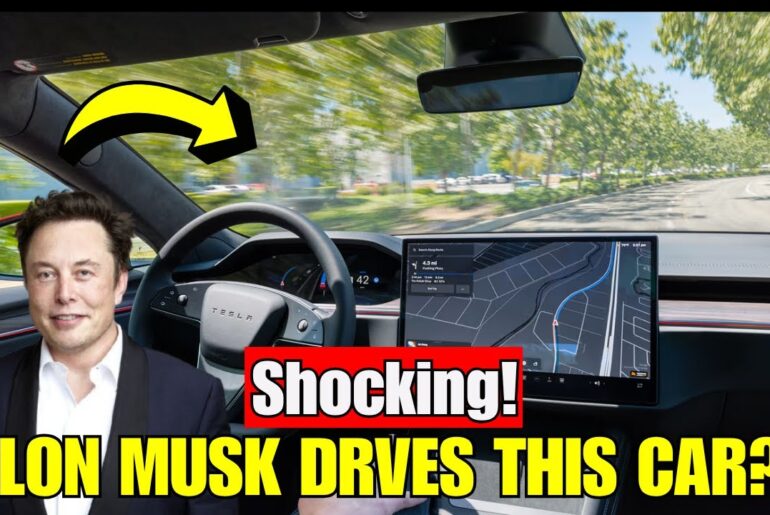5 Shocking Reasons Behind the Rapid Depreciation of EVs! Electric Vehicle Price Crash
Welcome to Highway Herald, your road map to the latest in auto. Today we’re diving into a topic that’s been stirring up quite a bit of debate among car enthusiasts. The investment value of electric vehicles. Now, we’re not talking about the usual suspects like range anxiety or charging convenience. We’re talking cold, hard cash.
Recent studies indicate that an average EV could lose half its value in just five years. Intrigued. Stick around as we delve into the top five reasons why EVs depreciate at such a rapid pace. Reason Number 5: The Battery Dilemma. Unsurprisingly, the battery is the first concern when it comes to electric vehicles.
This critical component can constitute up to 50% of an EV’s value. Yet it’s also the most susceptible to degradation and capacity loss over time. For those eyeing a used EV. This signals an impending battery replacement, a venture that could cost anywhere from $10000 to $20000 or more.
The heart of the issue lies in the battery’s composition a mix of chemicals that degrade over time for various reasons. Manufacturers typically offer an 8 to 10 year warranty on their batteries, but the actual lifespan can vary. Adding a layer of uncertainty to the used EV purchase.
Assessing a used EV is no easy task. Unlike with gas powered cars, where a physical inspection and test drive can provide a good sense of the vehicle’s condition, there’s no straightforward way to gauge the health of an EV battery. The battery management system offers limited insights and can be unreliable.
External factors, such as extreme temperatures and high charging and discharging currents, can impact battery degradation. Overcharging and over discharging are also concerns that can’t be easily checked, like oil change intervals and gas powered cars. In essence, the uncertainty surrounding battery health and the potential for significant future investment deter many potential buyers,
Contributing to the high depreciation rate of used EVs. This is one of the key factors driving the high depreciation rate of EVs. Reason Number 4: The Impact of Hefty Discounts on New EVs. The pricing of new cars invariably shapes the used car market, and EVs are no exception.
The catch is that new EVs are becoming more affordable each year, thanks to substantial discounts. Consider the price war that erupted last year with major players like Tesla and Ford offering significant markdowns on their new EVs. These vehicles can now be purchased for ten, 20 or even 30%
Less than their prices just a year ago. Dealerships have no choice but to slash prices as supply outstrips demand, with dealer lots overflowing with unsold EVs and an average of 117 days to clear current inventory, new EVs are emerging as a more attractive option than their used counterparts.
This shift has accelerated the depreciation of used EVs as potential buyers are few and far between vehicles that once commanded hefty prices now align with these discounted rates further driving up the depreciation rate. In extreme cases, we’ve seen EVs lose 50% of their value
In just three years with luxury models bearing the brunt. Take, for instance, a few Porsche Taycan models up for sale. A 2020 turbo model with just under 15,000 miles on the clock is listed at $89,998, a steep drop from its original MSRP of $179,630.
Or consider a 2020 turbo s with 21,635 miles currently listed at $105,900, down from its 2020 price tag of nearly $207,000. That’s a loss of over $100,000 in just four years. Today, the average five year depreciation rate for EVs stands at around 50%.
With models like the Tesla Model S seeing rates as high as 55%. This is significantly higher than gas powered cars, which typically lose around 38% of their value after five years. Before we delve into reason number three, we’d like to invite you to subscribe to Highway Herald.
Your support fuels our passion to produce more content like this. Now let’s shift gears and explore Reason Number 3: The Reality of High Running Costs. One of the touted advantages of EVs over internal combustion vehicles is their lower running costs. In theory, EVs should be cheaper to run than their gas guzzling counterparts.
Electricity should cost less than gas. Maintenance should be minimal as EVs don’t require. Traditional services like oil changes and reliability should be higher due to fewer mechanical parts. However, the reality paints a different picture. While charging an EV at home can be cheaper than filling up a gas tank, it’s not always feasible.
EV owners often need to use public charging stations where electricity prices can be steep, especially for fast DC charging. In such cases, the cost can be comparable to or even exceed the cost of refueling a gas car. When it comes to maintenance. While there are no fluid changes, repairs can be significantly
More expensive, particularly for body parts following collisions. This is due to the scarcity of trained personnel and the uniqueness line of electric vehicles. Consequently, insurance premiums are also higher, adding to the running costs and contributing to price depreciation. And let’s not forget about tires.
The added weight of EVs leads to faster tire wear, so be prepared to replace the rubber more frequently on your TV. Reason Number 2: The Reliability Quandary. When it comes to used cars. Durability and reliability are often the top priorities for buyers.
This is why vehicles from manufacturers like Toyota retain their value so well. EVs were anticipated to boast high reliability ratings, but the reality has proven otherwise. Despite having fewer components, EVs are less reliable. A recent survey from Consumer Reports reveals that they cause 80% more problems than their gas powered counterparts.
The battery and its performance are the primary sources of complaints. Charging issues are a common occurrence across almost all EV models, and batteries often lose their capacity faster than expected. Factors such as cold weather and heavy usage can lead to underperformance, overheating and underperforming
Electric motors are other issues as seen in models like the Mustang Mach-E. But that’s just one side of the coin. EVs, touted as the vehicles of the future, heavily rely on tech features, particularly infotainment systems. The absence of physical buttons and controls in EVs and the complexity
Of infotainment systems make them highly susceptible to errors and malfunctions. Even the smallest glitch can render the car inoperable. Moreover, many consumers have raised concerns about the build quality in an effort to cut production costs. Carmakers often overlook quality control. Poorly assembled body panels and defective interior
Components are just a few of the issues reported. Reason Number 1: The Rapid Outdating of EVs. The EV industry has been in a state of flux in recent years, not in terms of sales figures but in terms of technological advancements. Models from just a few years ago already seem outdated.
We frequently see different automakers introducing revolutionary technologies, particularly in battery technology. What’s competitive today may seem obsolete in just a few years. Carmakers are continually pushing the boundaries in terms of maximum range and charging speed, which are currently major deterrents for many potential buyers.
In such a scenario, EVs naturally depreciate at a rapid rate. Many question the wisdom of purchasing an EV that’s only a few years old, but already relatively outdated and could be considered antiquated in just a few more years. This is one of the main reasons why EVs depreciate and will continue
To depreciate even more as technology progresses. In a few years, super luxurious EVs that cost hundreds of thousands today will likely be worth next to nothing, deterring potential buyers. The used EV market is virtually nonexistent for these reasons, and with the influx of new EVs, the situation could worsen in the future.
Thank you for joining us on this journey through the world of EVs. Don’t forget to subscribe to Highway Herald to stay updated on the latest vehicle updates and upcoming videos. See you next time.
In this video, we delve into the fascinating world of electric vehicles (EVs) and explore why they depreciate at such a rapid pace. We uncover the top 5 reasons behind this trend, from battery concerns to the reality of high running costs. Join us on this journey and discover what makes EVs tick.
✳️ 00:00 | Introduction
🛻 00:37 | Reason Number 5: The Battery Dilemma
🛻 02:00 | Reason Number 4: The Impact of Hefty Discounts on New EVs
🛻 04:04 | Reason Number 3: The Reality of High Running Costs
🛻 05:17 | Reason Number 2: The Reliability Quandary
🛻 06:40 | Reason Number 1: The Rapid Outdating of EVs
In this deep dive into the world of EVs, we shed light on the factors that contribute to their high depreciation rate. From the vulnerabilities of the battery to the impact of hefty discounts on new EVs, we leave no stone unturned. Don’t miss out on this insightful exploration of the EV industry.
#HighwayHerald #electricvehicle #electrictruck #electriccar #carreview #truckreview #suvreview #byd #fordtrucks #gmctrucks #tesla
🔔 Don’t forget to ring the bell icon for instant notifications on our latest videos. Enjoyed the ride? Please give this video a thumbs up and spread the highway vibes to your friends!
Keep your engines running for more content on new arrivals, head-to-head battles, and in-depth explorations in the realm of vehicles!
Disclaimer: This video remains unbiased and unsponsored. Views and opinions belong solely to Highway Herald.






